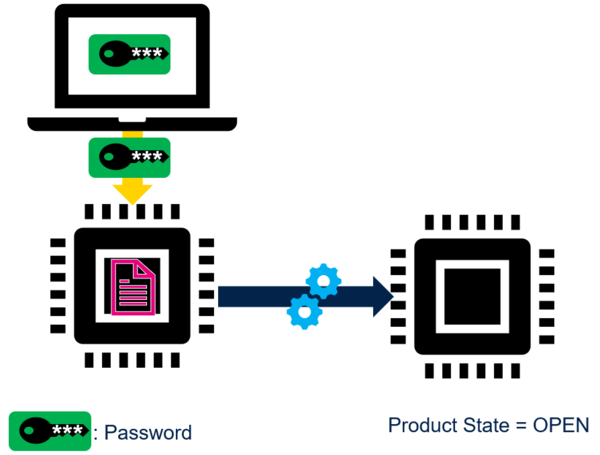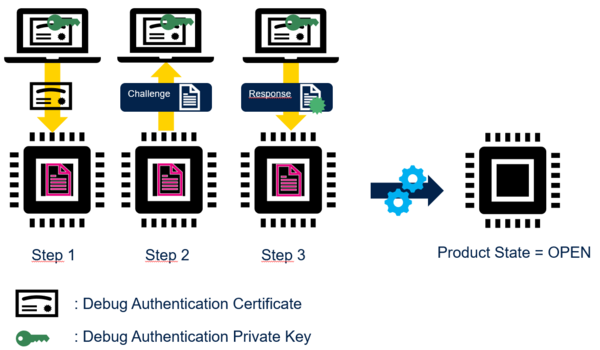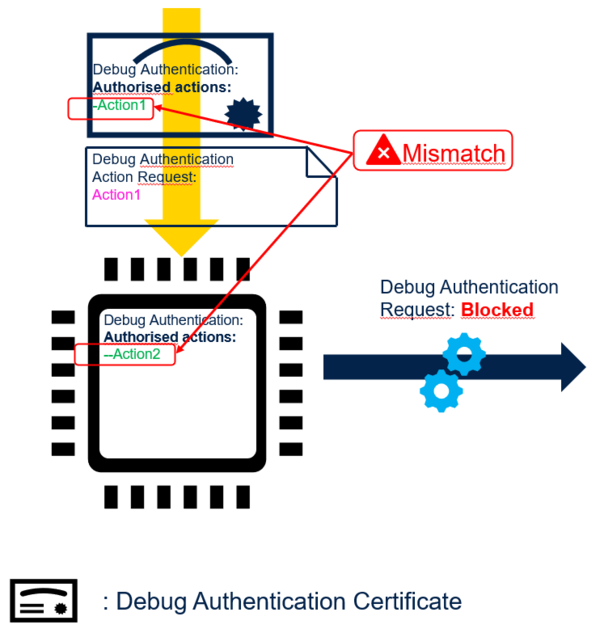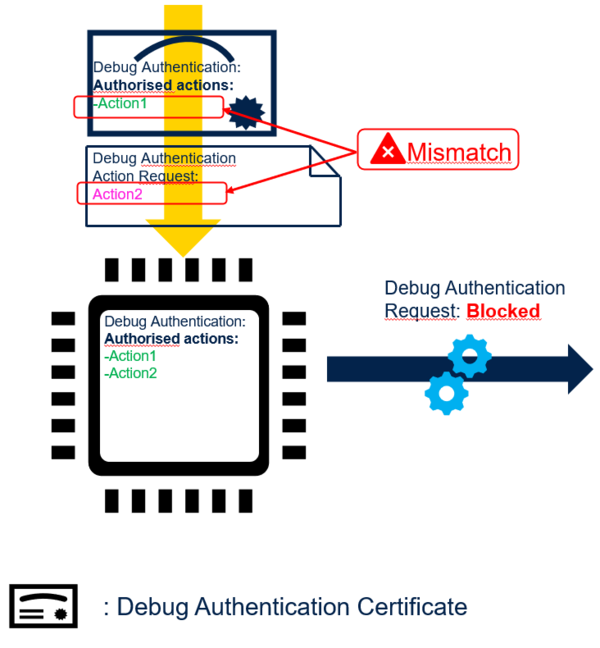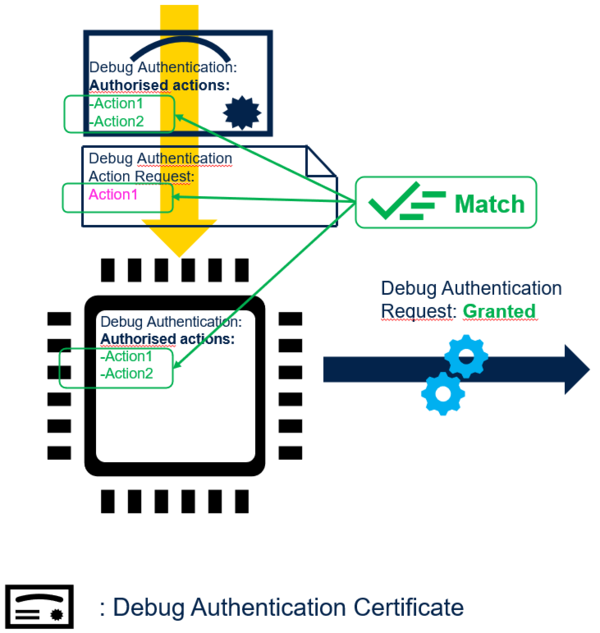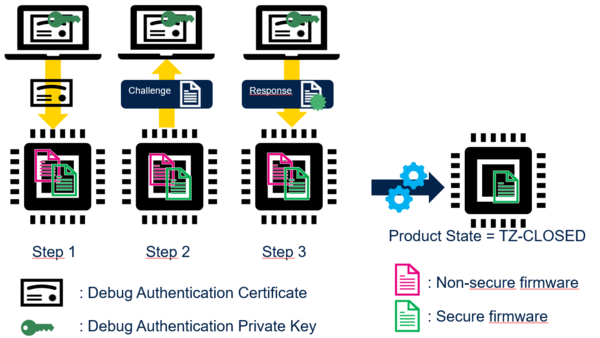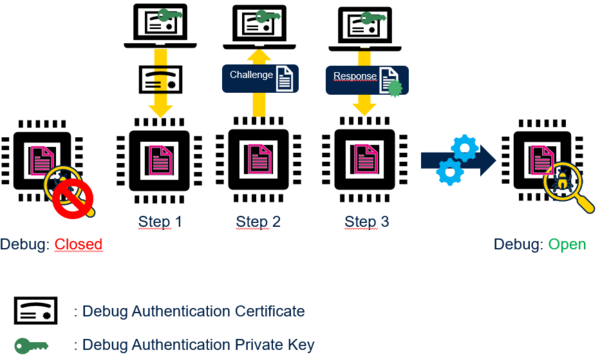1. What is Debug Authentication ?
User leverages Debug Authentication security feature to either:
- Perform regression to product states OPEN or TZ-CLOSED in a secured way, erasing user data in user Flash, SRAM and OBKeys.
- Re-open Debug Access on the STM32 in a secured way.
Debug Authentication only grants such services to legitimate user thanks to Password or Certificate.
Debug Authentication is tightly related to:
- STM32 life cycle
- STM32 ARM TrustZone enablement or not.
1.1. Password
On Password reception, STM32 verifies that Password corresponds to the one provisioned.
1.2. Certificate
When user triggers Debug Authentication feature (Regression or Debug Re-opening), he sends firt a Certicate and a Debug Authentication Action Request to the STM32. On Certificate reception (Step 1), STM32 verifies that:
- Certificate fits the one provisioned.
- The Authorised Actions sent with the Certificate fit the ones provisioned.
- The Action Request fits with Authorised Action list carried by the Certificate.
STM32 starts challenge-response procedure (Step 2 and Step 3): STM32 verifies that Host owns the Debug Authentication Private Key before performing the requested action (regression or Debug re-opening).
The Certificate carries the requested action.
In the scheme below STM32 blocks Debug Authentication Action Request because Authorised Actions within Certificate do not map Provisioned Authorised Actions.
In the scheme below STM32 blocks Debug Authentication Action Request because Action Request does not fit with Certificate Authorized Actions.
In the scheme below, Certificate Authorized Actions fit Provisioned Authorized Action and Action Request fits Certificate Authorized Actions, then STM32 grants Debug Authentication Action Request.
2. Provisioning
Before configuring STM32 in a product state higher than PROVISIONING (i.e PROVISONED, TZ-CLOSED or CLOSED) , user must provision either:
- The hash of the CA Public Key and Authorized Actions. Authorized actions are a combination of Regression, Partial Regression and Debug re-opening.
or
- The hash of the Password.
After running regression, STM32 comes back either in product state OPEN or TZ-CLOSED.
3. Regression
3.1. Full regression
Debug Authentication erases full user Flash, SRAM and OBKEys1. Full regression erases Debug Authentication Provisioned data, i.e Certificate and Authorized Actions, hence user must provision again Debug Authentication data. After Full regression STM32 is in product state OPEN.
3.2. Partial regression
Debug Authentication erases non-secure user Flash, non-secure SRAM and non-secure OBKEys1. After Full regression STM32 is in product state TZ-CLOSED.
Please note that STM32 not supporting TrustZone or not enabling TrustZone do not support Partial regression.
Note1: When STM32 supports OBKeys.
4. Debug Re-opening
Only Debug Authentication by Certificate supports Debug Re-opening. After Debug Re-opening user can debug STM32. Debug Re-opening does not change STM32 product state. Debug Re-opening is temporary, power off the STM32 disables Debug Re-opening and Debug is closed again.
